
Consumer panel surveys: An advanced method of quality research
Consumer panel surveys: An advanced method of quality research Transform your insight generation process Use our in-depth online survey guide to create an actionable feedback

Find the best survey software for you!
(Along with a checklist to compare platforms)
Take a peek at our powerful survey features to design surveys that scale discoveries.
Explore Voxco
Need to map Voxco’s features & offerings? We can help!
Find the best customer experience platform
Uncover customer pain points, analyze feedback and run successful CX programs with the best CX platform for your team.

We’ve been avid users of the Voxco platform now for over 20 years. It gives us the flexibility to routinely enhance our survey toolkit and provides our clients with a more robust dataset and story to tell their clients.
Steve Male
VP Innovation & Strategic Partnerships, The Logit Group
Explore Regional Offices

Find the best survey software for you!
(Along with a checklist to compare platforms)
Take a peek at our powerful survey features to design surveys that scale discoveries.
Explore Voxco
Need to map Voxco’s features & offerings? We can help!
Find the best customer experience platform
Uncover customer pain points, analyze feedback and run successful CX programs with the best CX platform for your team.

We’ve been avid users of the Voxco platform now for over 20 years. It gives us the flexibility to routinely enhance our survey toolkit and provides our clients with a more robust dataset and story to tell their clients.
Steve Male
VP Innovation & Strategic Partnerships, The Logit Group
Explore Regional Offices

Find the best survey software for you!
(Along with a checklist to compare platforms)
Take a peek at our powerful survey features to design surveys that scale discoveries.
Explore Voxco
Need to map Voxco’s features & offerings? We can help!
Find the best customer experience platform
Uncover customer pain points, analyze feedback and run successful CX programs with the best CX platform for your team.

We’ve been avid users of the Voxco platform now for over 20 years. It gives us the flexibility to routinely enhance our survey toolkit and provides our clients with a more robust dataset and story to tell their clients.
Steve Male
VP Innovation & Strategic Partnerships, The Logit Group
Explore Regional Offices
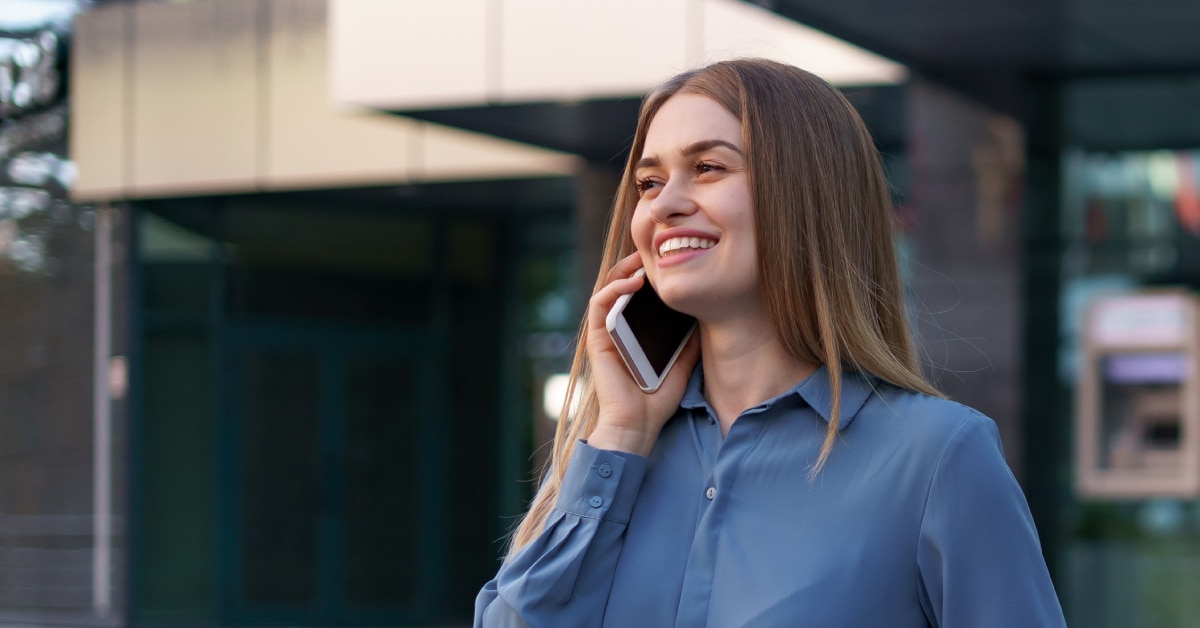
SHARE THE ARTICLE ON
Voice biometrics is a solution to the three objectives. It provides better security on customer data, a smooth customer experience, and at a low cost. Keeping the good guys in and bad guys locked out of the system, voice biometrics is a technology used widely across the complex call center industry.
With advancing technology to prevent human overwork, frauds are also becoming sophisticated in cyber-related crime. One such industry falling for such fraudulent behavior is the Contact Center.
Contact centers are always searching for ways to make a customer experience as seamless as possible at a lower price and with improved security. With this objective, the contact center industry has moved on to use Voice Authentication.
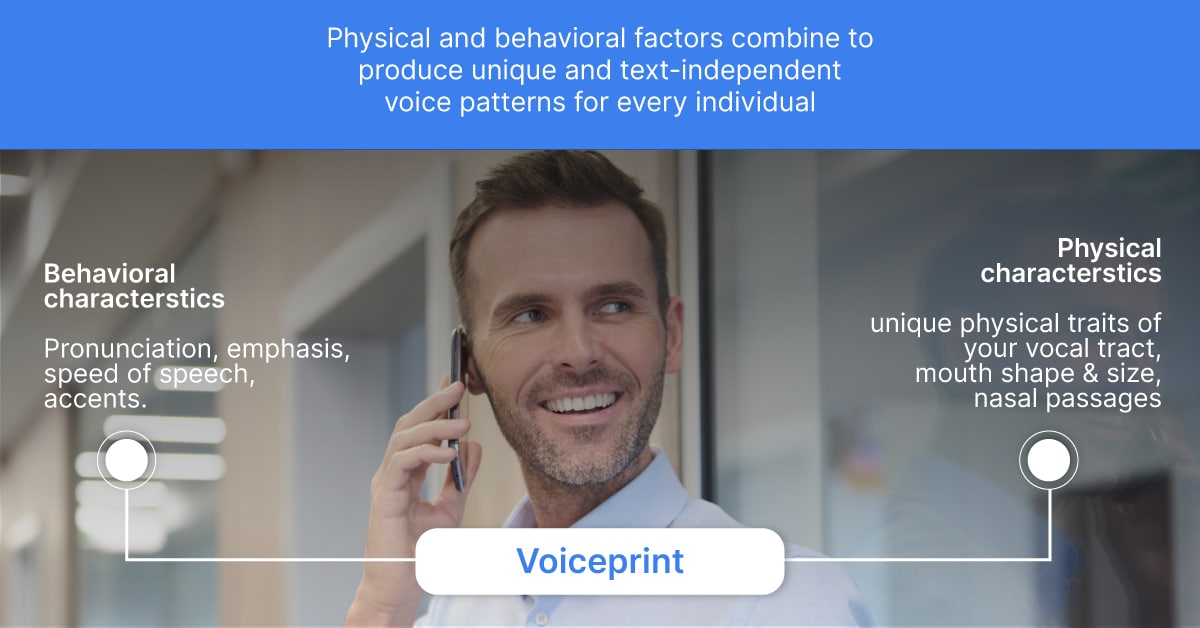
Get a free demo with our call center experts. See what Voxco can do for you!
Voice biometrics relies on the characteristics of a caller’s speech to authenticate them as genuine callers. When a customer calls the contact center, the voice biometrics focus on confirming the speaker’s claim of identity by verifying their voice with the existing Voiceprint.
Unlike knowledge-based authentication (favorite color or PIN) and token-based authentication, the Voice Biometric uses biological markers of the caller to verify and authenticate their identity. The biological markers used in voice biometrics are a combination of behavioral and physical speech characteristics.
Behavioral characteristics: pronunciation, accent, and emphasis
Physical characteristics: lung capacity, vocal tract, and nasal passages
These characteristics that form unique vocal markers of all callers are used to analyze over 100s speakers. And, the unique voice pattern is called Voiceprint. This voiceprint is encrypted. This implies that the voiceprint only works in the system it was created in. This makes it difficult to hack. Comparing a caller’s voice to the voiceprint listed under the identity and authenticating that the caller’s voice matches that of the voiceprint, Voice Biometrics determines that the caller is the same person as registered. Sophisticated voice biometrics software along with accuracy and security also allows the call center to block unauthorized callers.
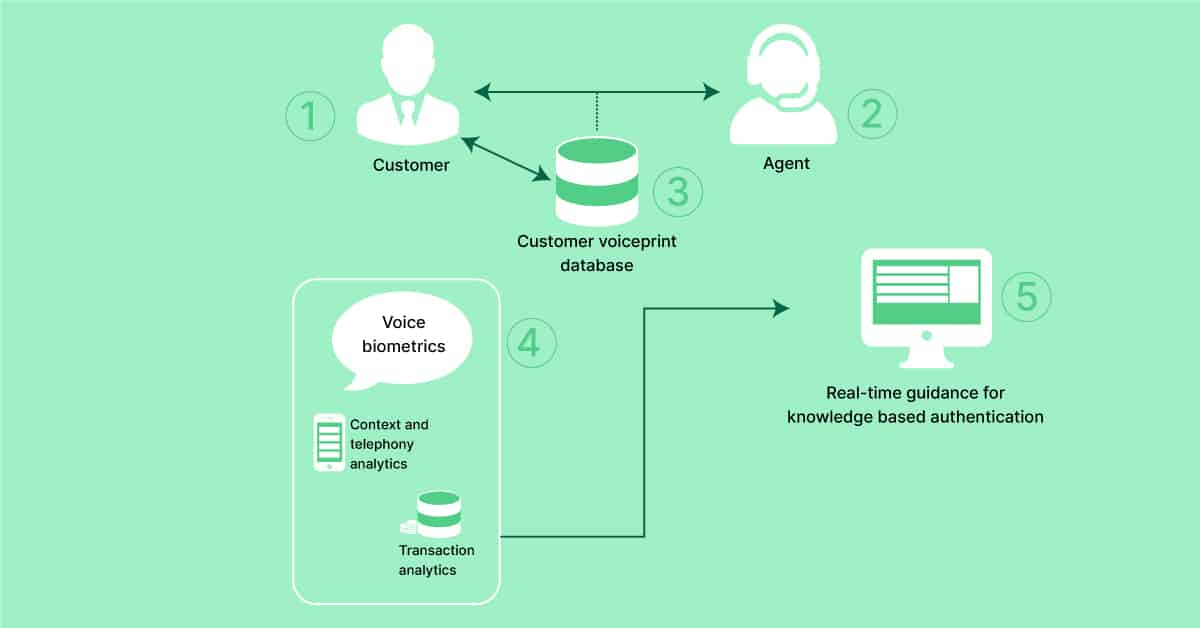
There are essentially two ways in which the voice biometrics process is carried out, that is, Active Enrollment and Passive Enrollment.
It is called active enrollment because in this process a customer is asked to recite certain phrases while in the call to establish their voiceprint. This authentication process takes place every time a caller calls. They are asked to recite phrases every time they call in order to compare their voice pattern with the stored voiceprint.
Passive enrollment is more advanced and secure. The process takes place in the background so to say. When you call a contact center, your voiceprint is generated and registered while you engage in a normal conversation with the agent.
Next time you call, the system verifies your voice as soon as you speak with an agent or IVR. No one asks you to recite phrases or any number to verify you. The passive voice authentication makes the procedure effortless.
Both the enrollment process helps agents relax knowing that the caller on the line is who they claim to be. This is called Positive Voiceprint.
While a Negative Voiceprint is useful to “blacklist”, that is, block unauthorized callers and set an alert on them. As a result, it helps to protect the customer’s data from fraud.
With all such positive sides in voice biometrics, the deployment is still low. The issues faced by contact centers when using voice biometrics are listed below.
As per Gartner data, only 60% of customers call a contact center in a year. Out of which, almost 10% or more, of the callers are resistant to have their voiceprint generated because of privacy reasons. This leaves around 50% or fewer callers with their voiceprint registered. The majority of the callers/customers will be left unregistered.
According to Gartner, approximately 10% to 25% of caller’s voice is prone to have failed verification due to poor call quality. This leaves only 25% to 40% of caller voice available for generating voice biometric. This leaves the unprotected calls vulnerable to the fraudsters.
While according to Gartner Voice Biometrics produces accurate results 87% to 97% of the time depending on the quality, there is a 1% of chance when the system will falsely authenticate a fraud. Moreover, once a fraudster has been authenticated they have access to the system, this makes voice biometric a single layer of protection . The fraudster is undetectable after that and will have access to the accounts for a time period.
Voice biometrics can only blacklist a fraud based on the voiceprint being unauthorized. It cannot detect fraud. And, continuing from the previous point, the fraud once they gain authentication it is not possible to detect them for months. This is deemed as post-incident forensics, that is, the fraud is detected after they have stolen from the organization.
With advanced voice conversion technology, a person can digitally reproduce a voice. Moreover, recording someone’s voice and then arranging words or playing television to mask their voice is also a crude method used by fraudsters to gain access to contact centers. While such incidents are low in rate, there is a possibility of such occurrence.
After listing the potential issues you may face, let’s list reasons that make Voice Biometrics a threat to fraud.
Learn how to meet respondents where they are, drive survey completion while offering a seamless experience, Every Time!
Voice Biometrics as we have established so far is secure technology in comparison to the traditional authentication methods. It provides high security and is an ensured solution against fraud. How voice biometric will help your contact center is listed as follows
Manual authentication of caller’s identity takes 30 to 45 seconds of average handle time for every call, approximately. With the integration of passive voice authentication the average handle time by 40 seconds approximately.
With passive authentication, it eliminates the need for the agent to ask questions to the customers. Live agents’ calls using CATI Surveys were 7x more in cost than the ones handled through IVR Survey Software. Containing the call in the IVR to better use verification tools and keep the data secured also leads to cutting the cost by approximately 6 to 7 times.
As a result of increased efficiency, the contact center can boost security while saving money.
Voice biometrics authentication in a call center helps identify fraudsters and prevent account takeover. With the process of having the customer’s voice enrolled and voiceprint created and encrypted, the contact center strengthens their security. Combining the system with voice detection software gives us a high accuracy in caller authentication.
The more enrollments rate the better fraud prevention. For example, assume if you have an enrollment rate of 49% a year, this means the fraud loss is reduced to approx 49%.
Traditional authentication of callers was stressful and repetitive. Moreover, the system was ineffective. KAB, knowledge-based authentication, was based on the process of a live agent asking a series of questions to the caller to verify the caller. A customer expects to have their issue solved quickly when they call a contact center. And, so being bombarded with questions was not satisfactory to the least. Moreover, it is also stressful for the agent because they are in constant attack from upset customers. Voice Biometrics authentication skips all such hassle and provides a consistent experience to the customer. Also, the experience of agents is also improved having been relieved from guessing if the caller is genuine or not. The voice biometrics provides real-time notification verifying the customer’s identity.
Passive authentication, real-time, doesn’t require asking questions and the agents can focus on the issue faced by the customer.
The passive, real-time enrollment provides a smooth authentication process. Voice biometric can verify the caller in real-time while they hold a conversation with the agent and compare the voice with the enrolled voiceprint. This does not disrupt the flow of conversation as it only takes a few seconds to verify.
In the traditional authentication process, the callers were asked security questions or PIN. These credentials were proved to be weak and were compromised. Such questions can be answered through a web search of the account holder which is easy work for the expert frauds.
Voice Biometrics puts a dent in the system. It is extremely difficult to compromise a unique voice pattern. The security of voice biometric prevents fraud even when they try to take over through IVR, mobile app, or contact center. All these preventive measures make voice biometric authentication a threat to fraud.
Read more

Consumer panel surveys: An advanced method of quality research Transform your insight generation process Use our in-depth online survey guide to create an actionable feedback
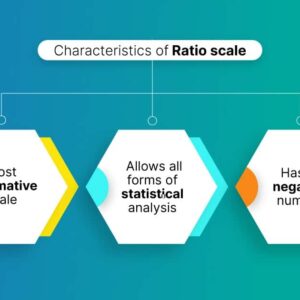
SURVEY METHODOLOGIES Nominal Scale Market Research Toolkit Get started with Voxco’s Market Research Toolkit. Market Research trends guide + Online Surveys guide + Agile MArket
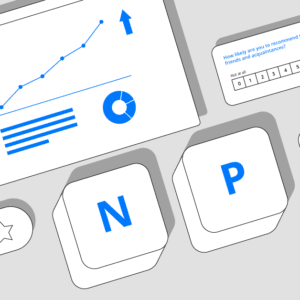
Maximize The Value Of NPS Analysis For Your Business SHARE THE ARTICLE ON Table of Contents NPS Analysis is important as it provides you with

Why should businesses focus on Customer Satisfaction Survey Software Development? Customer Satisfaction Guide Download The Voxco Guide To CUstomer Satisfaction Download Now SHARE THE ARTICLE

Organizations have long striven to build productive on premise teams but considering a shift to the hybrid model building high performing remote teams is a

Correlation vs. Causation in Market Research Unveiled SHARE THE ARTICLE ON Table of Contents In the world of market research, where data and insights drive
We use cookies in our website to give you the best browsing experience and to tailor advertising. By continuing to use our website, you give us consent to the use of cookies. Read More
| Name | Domain | Purpose | Expiry | Type |
|---|---|---|---|---|
| hubspotutk | www.voxco.com | HubSpot functional cookie. | 1 year | HTTP |
| lhc_dir_locale | amplifyreach.com | --- | 52 years | --- |
| lhc_dirclass | amplifyreach.com | --- | 52 years | --- |
| Name | Domain | Purpose | Expiry | Type |
|---|---|---|---|---|
| _fbp | www.voxco.com | Facebook Pixel advertising first-party cookie | 3 months | HTTP |
| __hstc | www.voxco.com | Hubspot marketing platform cookie. | 1 year | HTTP |
| __hssrc | www.voxco.com | Hubspot marketing platform cookie. | 52 years | HTTP |
| __hssc | www.voxco.com | Hubspot marketing platform cookie. | Session | HTTP |
| Name | Domain | Purpose | Expiry | Type |
|---|---|---|---|---|
| _gid | www.voxco.com | Google Universal Analytics short-time unique user tracking identifier. | 1 days | HTTP |
| MUID | bing.com | Microsoft User Identifier tracking cookie used by Bing Ads. | 1 year | HTTP |
| MR | bat.bing.com | Microsoft User Identifier tracking cookie used by Bing Ads. | 7 days | HTTP |
| IDE | doubleclick.net | Google advertising cookie used for user tracking and ad targeting purposes. | 2 years | HTTP |
| _vwo_uuid_v2 | www.voxco.com | Generic Visual Website Optimizer (VWO) user tracking cookie. | 1 year | HTTP |
| _vis_opt_s | www.voxco.com | Generic Visual Website Optimizer (VWO) user tracking cookie that detects if the user is new or returning to a particular campaign. | 3 months | HTTP |
| _vis_opt_test_cookie | www.voxco.com | A session (temporary) cookie used by Generic Visual Website Optimizer (VWO) to detect if the cookies are enabled on the browser of the user or not. | 52 years | HTTP |
| _ga | www.voxco.com | Google Universal Analytics long-time unique user tracking identifier. | 2 years | HTTP |
| _uetsid | www.voxco.com | Microsoft Bing Ads Universal Event Tracking (UET) tracking cookie. | 1 days | HTTP |
| vuid | vimeo.com | Vimeo tracking cookie | 2 years | HTTP |
| Name | Domain | Purpose | Expiry | Type |
|---|---|---|---|---|
| __cf_bm | hubspot.com | Generic CloudFlare functional cookie. | Session | HTTP |
| Name | Domain | Purpose | Expiry | Type |
|---|---|---|---|---|
| _gcl_au | www.voxco.com | --- | 3 months | --- |
| _gat_gtag_UA_3262734_1 | www.voxco.com | --- | Session | --- |
| _clck | www.voxco.com | --- | 1 year | --- |
| _ga_HNFQQ528PZ | www.voxco.com | --- | 2 years | --- |
| _clsk | www.voxco.com | --- | 1 days | --- |
| visitor_id18452 | pardot.com | --- | 10 years | --- |
| visitor_id18452-hash | pardot.com | --- | 10 years | --- |
| lpv18452 | pi.pardot.com | --- | Session | --- |
| lhc_per | www.voxco.com | --- | 6 months | --- |
| _uetvid | www.voxco.com | --- | 1 year | --- |